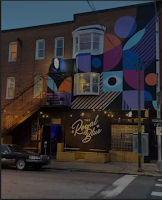Hazard SEES
My name is
Esther Kim and I am a junior Architectural Design major. During the Fall of
2015, I was a research intern for Hazard SEES. Hazard
SEES is a research grant that focuses on how hazardous weathers, such as
hurricanes and flooding, influence housing developments on the East Coast. MICA has
been a partner with SEES for years now, integrating historical and dynamic demographic GIS mapping analysis using databases of hazardous weather modeling
scenarios created by neighboring institutions such as Johns Hopkins,
George Mason, and many others.
In the spring of 2015, I took an Art History
course with Katie O’Meara, a faculty member of MICA's Architectural Design department.
As a part of final project, I analyzed how architecture and
landmarks play very important roles in shaping the current city of Lugo in Spain.
The work that I produced in the class led to this internship the following semester, the fall of 2016. With the task of analyzing a large set of data extracted from National
Historical Geographic Information System, I was able to develop independent
research and critical thinking skills which
are essential in detecting urban development patterns. By approaching Baltimore City's most critical local problems such as physical decay and racial isolation
in organized ways, I learned to identify the cause of recent phenomenons and the result of a series of city planning decisions. This internship also taught me how
to communicate my ideas with people from other disciplines by creating maps and
graphs. Furthermore, it gave me opportunity to work and meet with a range of
experts including members for the Baltimore City Planning Department and Johns
Hopkins University. In addition to taking the
necessary course works at Architectural Design department, I am happy that I
was able to explore my interest and my future career in urban design by this
research internship. It helped me to more clearly define my goals and focus for
my remaining years at MICA.



